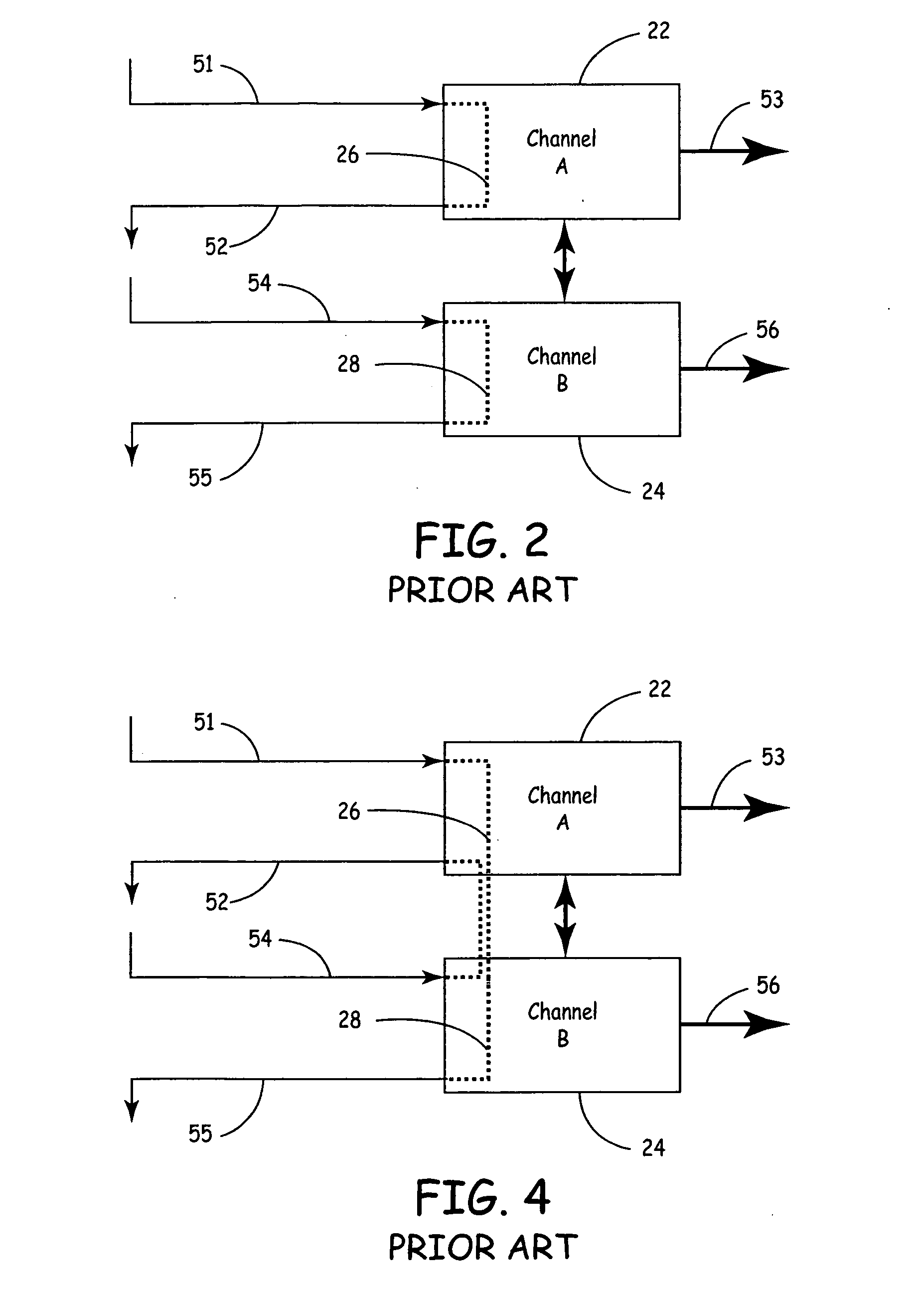Method and system for multi-user channel allocation for a multi-channel analyzer
a multi-channel analyzer and multi-user technology, applied in the field of multi-user channel allocation for multi-channel analyzers, can solve the problems of not being able to easily integrate the data from multiple ones of the analyzer, not working well to track down problems or optimize the communication interface between multiple computing devices in a large fibre channel network, and not being able to achieve the optimization of communication interfaces, reducing the amount of data, and enhancing the analysis of data captured by the integrated multi-channel analyz
- Summary
- Abstract
- Description
- Claims
- Application Information
AI Technical Summary
Benefits of technology
Problems solved by technology
Method used
Image
Examples
examples
[0215] 0000: word match if (match byte 3) and (match byte 2) and (match byte 1) and (match byte 0). [0216] 0100: word match if (match byte 3) and (NO match byte 2) and (match byte 1) and (match byte 0). [0217] 1111: word match if (NO match byte 3) and (NO match byte 2) and (NO match byte 1) and (NO match byte 0).
abort_config: (8 bits) [0218] bit 0: store a new qualifier z. [0219] bit 1: new qualifier z has one-frame scope.
Counters
[0220] There may be up to 24 counters: 8 time counters, 8 loop counters, and 8 word counters. Each counter behaves differently, but all share some characteristics: [0221] Counters always count up. [0222] Counters have one initialization value which is loaded every time the counter is reset. [0223] Counters will output a “done” signal when they roll over from the highest possible count to zero. [0224] To implement a countdown, the initialization value should be set to a negative number. Then the done signal will be asserted as the counter rolls over to ...
PUM
 Login to View More
Login to View More Abstract
Description
Claims
Application Information
 Login to View More
Login to View More - R&D
- Intellectual Property
- Life Sciences
- Materials
- Tech Scout
- Unparalleled Data Quality
- Higher Quality Content
- 60% Fewer Hallucinations
Browse by: Latest US Patents, China's latest patents, Technical Efficacy Thesaurus, Application Domain, Technology Topic, Popular Technical Reports.
© 2025 PatSnap. All rights reserved.Legal|Privacy policy|Modern Slavery Act Transparency Statement|Sitemap|About US| Contact US: help@patsnap.com



